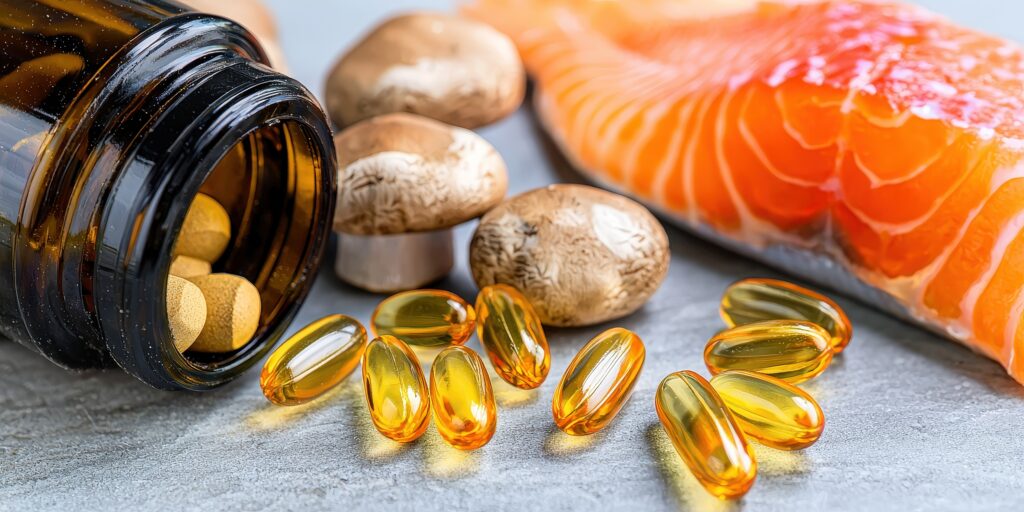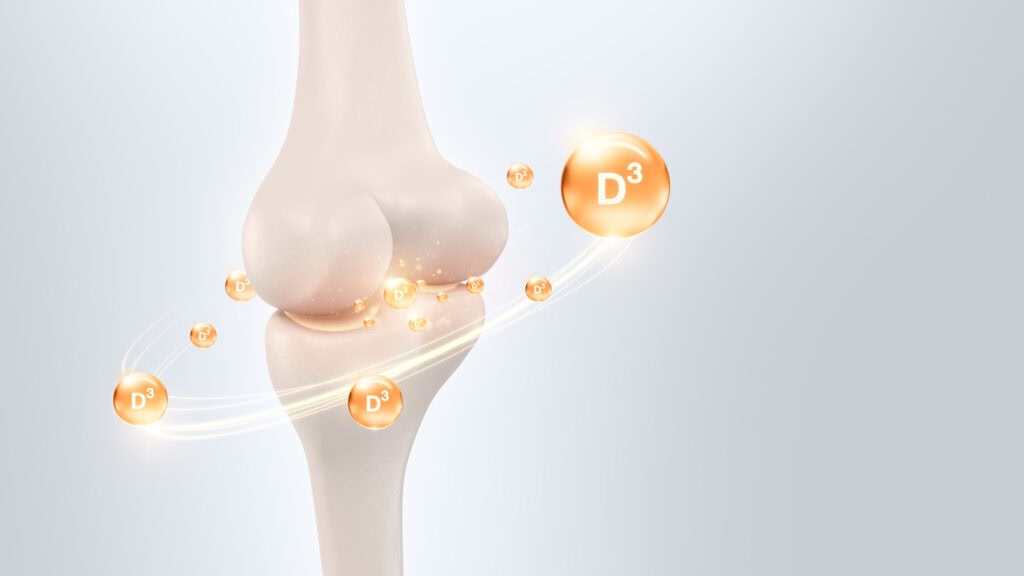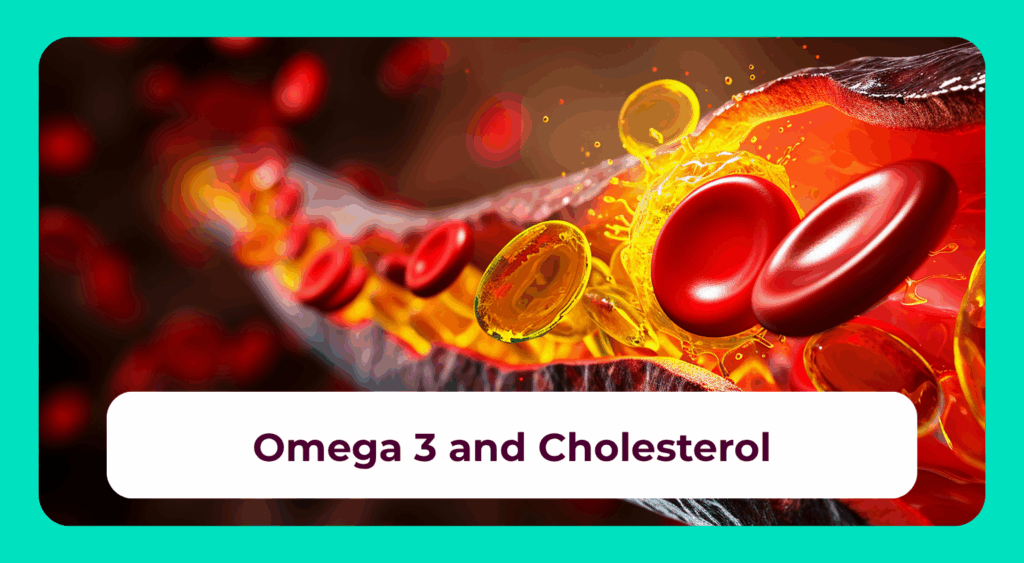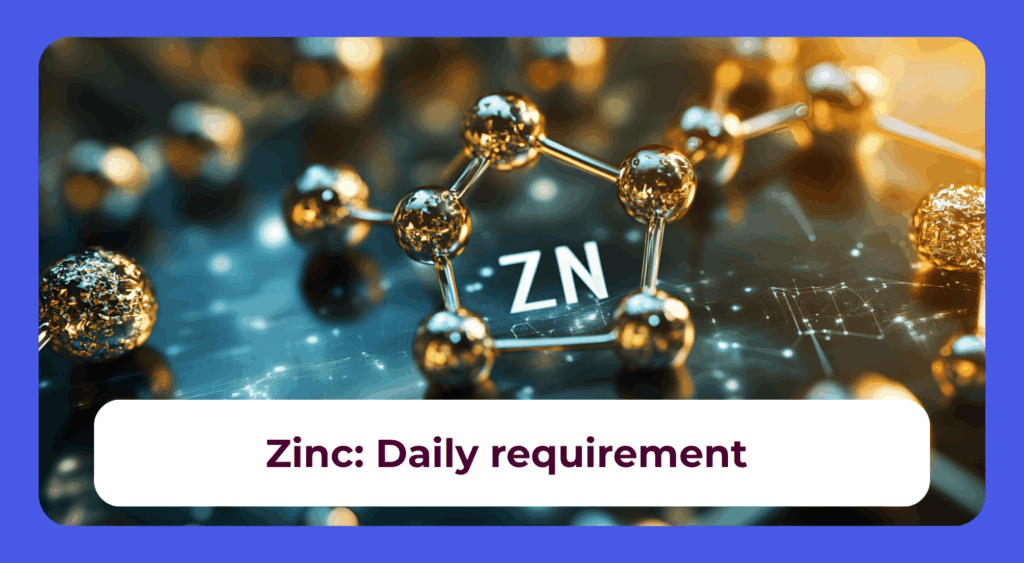Vitamin D3 deficiency at a glance
- Since the body depends on the sun for the production of vitamin D, a lack of sunlight can lead to a deficiency.
- There is an increased risk of deficiency in older and dark-skinned people, among others.
- The symptoms of a vitamin D deficiency include, for example, increased susceptibility to infections and muscle weakness.
- In the long run, a severe vitamin D deficiency can promote bone fractures and diseases such as osteoporosis.
- An existing deficiency can usually be treated well with an appropriately dosed vitamin D supplement.
Vitamin D is important for bone mineralization, among other things. The body’s own production of vitamin D depends on sufficient UV-B radiation from sunlight. A lack of sun exposure, such as through long periods of time indoors or during the winter months, can significantly reduce vitamin D formation in the body. This leads to a deficiency that manifests itself with numerous complaints and can have serious consequences for health in the long run. To remedy an existing vitamin D deficiency, it is necessary to take vitamin D as a dietary supplement.
What is vitamin D?
Vitamin D is a collective name for several fat-soluble substances with similar effects. Strictly speaking, these are not vitamins, but prohormones. This is because the hormone calcifediol is formed from them in the body .
Regardless of this, a distinction is made between two types of vitamin D:
- Vitamin D2 or ergocalciferol is the form formed by plants. It must first be converted in the human body and is therefore less effective.
- Vitamin D3 or cholecalciferol is the form formed by animals and humans. Since it does not have to be converted first, it is more effective than D2.
What does the body need vitamin D for?
Vitamin D has numerous important tasks in the human body. Among other things, it makes a decisive contribution to the normal maintenance of bones and teeth by promoting the absorption of phosphorus and calcium and regulating calcium levels in the blood.
Apart from that, vitamin D is also important for, for example:
- normal muscle function,
- the immune system and
- cell division.
How is the body supplied with vitamin D?
Most vitamin D is produced by the body itself. To do this, it first converts cholesterol to provitamin D. From this, it first forms previtamin D and then vitamin D in the skin with the help of UV-B radiation from the sun.
Part of the vitamin D requirement is also covered by diet. However, the supply with food only contributes to the supply to a very limited extent. Depending on the diet, food provides between 10 and 20 percent of the daily requirement.
What is the daily vitamin D requirement?
If the body’s own synthesis fails to materialise, a sufficient supply of vitamin D from the outside is required. According to the reference values of the DGE (German Nutrition Society), children from one year of age and adults in this case need 20 micrograms daily. For infants, the DGE specifies the daily vitamin D requirement at 10 micrograms. This is also the usual dose for rickets prophylaxis.1
How does vitamin D deficiency occur?
The body can only produce vitamin D if sunlight or UV-B radiation is available to it. However, this is not always the case in central and northern European countries. Especially in the winter months, the sun is often not enough to ensure sufficient body production of vitamin D.
To make matters worse, most people no longer work outdoors, but in offices or factories. As a result, they often do not get enough sun even in summer and can also develop a vitamin D deficiency more easily at this time of year.
Who is particularly susceptible to a deficiency?
In general, all people can be affected by a vitamin D deficiency. However, certain factors can significantly increase the risk.
The following groups of people are particularly susceptible to a deficiency:
- People with dark skin types, as the strong pigmentation allows less UV radiation to pass through
- Older people who produce less vitamin D and are also less likely to spend time outdoors.
- People whose vitamin D metabolism is disturbed by taking certain medications
- People who suffer from chronic liver or kidney disease
- People who have chronic bowel diseases such as Crohn’s disease lead to reduced nutrient absorption
What is a vitamin D predator?
Vitamin D robbers are substances that can impair the metabolism of vitamin D. These include, for example, cortisone and medications used to treat epilepsy, as well as St. John’s wort, which is used as a natural mood enhancer.
Can you prevent vitamin D deficiency with your diet?
Unlike other Vitamins an adequate supply of vitamin D through the diet alone is often not possible, as only a few foods contain relevant amounts of vitamin D. The main natural sources are cod liver oil, fatty fish such as salmon, mackerel and herring, and seafood. Some dairy products, eggs, and liver also contain small amounts of vitamin D.
In plant foods, usually only the form vitamin D2 (ergocalciferol) is found, which is converted into the active form in the body less efficiently than vitamin D3 (cholecalciferol) from animal sources. Therefore, supplementation with vitamin D supplements may be necessary, especially in the winter months.

Want to Explore the Future of Nutrition?
Discover how genetic testing can provide in-depth insights into vitamin and mineral needs. Partnering with Novogenia opens the door to offering advanced, personalised health recommendations based on genetics. As an expert in nutrigenetics, Novogenia equips businesses with the tools to elevate their health services.
By becoming a Novogenia partner, you’ll gain access to cutting-edge genetic analyses, enabling you to offer your customers highly customised health solutions. With Novogenia’s support, businesses can stand out in the growing field of personalised nutrition, building customer loyalty and expanding service offerings. Take the next step in transforming health services and unlocking the full potential of nutrigenetics.
Symptoms: How does vitamin D3 deficiency manifest itself?
If an adequate supply of vitamin D is not ensured, this can become noticeable over time through numerous deficiency symptoms. The symptoms that occur depend primarily on the duration and severity of the vitamin D deficiency.
Typical early signs of a deficiency are, for example:
- Joint pain
- Bone pain
- Myasthenia
- Cramps
- Increased susceptibility to infections
- Skin
- Hair loss
- Fatigue
- Fatigue
- Depressive moods
- Migraine
What are the consequences of a severe vitamin D deficiency?
A severe vitamin D deficiency has a negative effect on bone health in the long run. Bone density decreases over time. This can make it easier for bone fractures to occur. In addition, the risk of developing the disease increases in adults osteomalacia and Osteoporosis if the deficiency is not compensated.

In addition, severe vitamin D deficiency is occasionally associated with various other conditions. These include, among others, Diabetes, cardiovascular disease and even cancer. So far, however, there is no clear evidence of this, as the Robert Koch Institute, for example, has clarified.2
Vitamin D deficiency leads to rickets in children
In infants and young children, persistent vitamin D deficiency can lead to rickets. The disease is accompanied by disorders of bone mineralization and deformations of the bones, among other things. To prevent rickets, infants are usually given 10 micrograms of vitamin D per day.
How is vitamin D deficiency diagnosed?
To diagnose an existing deficiency, the vitamin D status can be determined. For this purpose, the serum concentration of 25-hydroxyvitamin D is measured. This is a precursor of vitamin D that is formed in the liver. The blood sample needed to measure vitamin D levels can be taken in a doctor’s office or taken at home with a special test kit.
How is vitamin D deficiency treated?
An existing deficiency can usually be treated well with vitamin D supplements . With the right dosage, these reliably ensure that the vitamin D level returns to normal and the deficiency symptoms subside promptly.
In addition, regular time outdoors can help boost the production of vitamin D. This is true at least if there is enough sun and the vitamin D metabolism is not impaired by diseases or medications.
Do tanning beds help against vitamin D deficiency?
Visits to a solarium promise tanned skin and a good mood even in the winter months. They are also said to promote the body’s own synthesis of vitamin D. However, tanning beds mainly work with UV-A radiation. However, UV-B radiation is required for the formation of vitamin D.
Contrary to statements to the contrary, solarium visits are therefore not suitable for counteracting vitamin D deficiency. In addition, there are possible risks to skin health. For this reason, the German Federal Office for Radiation Protection, among others, strongly advises against the use of solariums.3
How common is a vitamin D deficiency?
Severe deficiency symptoms are rare. Nevertheless, many people are affected by an inadequate supply of vitamin D. According to the results of the National Consumption Study II, e.g. 82 percent of men and 91 percent of women in Germany do not have the recommended vitamin D intake.4 It is therefore often useful to check the vitamin D status even without visible symptoms.
Can you overdose on vitamin D?
An excess of vitamin D from excessive supplementation can lead to increased calcium levels in the blood – and this can cause health conditions such as nausea, vomiting and, in severe cases, kidney damage. The European Food Safety Authority (EFSA) recommends a maximum daily intake of up to 100 micrograms of vitamin D for adults as safe.5 This corresponds to five times the daily requirement.
What are the consequences of vitamin D excess?
The excess promotes the absorption of calcium from food and the release of the mineral from the bones. This results in an increase in the calcium level in the blood, which can manifest itself with numerous symptoms. A permanent oversupply can even lead to kidney damage, vascular calcification and an increased risk of osteoporosis.
What helps with a vitamin D overdose?
In the event of an overdose of vitamin D, the intake of dietary supplements should be stopped immediately. In severe cases, medical attention may be needed to normalize blood calcium levels.
How can vitamin D deficiency be prevented?
In order to be able to produce enough vitamin D, the body needs sun. Regular stays outdoors therefore help to prevent a deficiency. Especially in winter, the additional intake of a dietary supplement can be useful. However, very high-dose preparations are usually not necessary even with a low vitamin D level and should only be taken under medical supervision anyway due to possible risks.
Important to know
Are you not a specialist and have complaints, certain diseases or suspect deficiency symptoms? Then please be sure to consult a doctor to discuss this.
- 1 Deutsche Gesellschaft für Ernährung e.V.: Schätzwerte für eine angemessene Vitamin D-Zufuhr bei fehlender endogener Synthese (Stand: 2012). URL: https://www.dge.de/wissenschaft/referenzwerte/vitamin-d/ (zuletzt aufgerufen am: 03.10.2024).kaltungen (zuletzt aufgerufen am: 19.09.2024).
- 2 Robert Koch-Institut: Welche Folgen kann ein Vitamin-D-Mangel haben? (Stand: 25.01.2019). URL: https://www.rki.de/SharedDocs/FAQ/Vitamin_D/FAQ05.html (zuletzt aufgerufen am: 07.10.2024).
- 3 Bundesamt für Strahlenschutz: Solarien. URL: https://www.bfs.de/DE/themen/opt/anwendung-medizin-wellness/solarien/solarien_node.html (zuletzt aufgerufen am: 07.10.2024).
- 4 Max Rubner-Institut: Ergebnisbericht, Teil 2 Nationale Verzehrsstudie II (Veröffentlichung: 2008). URL: https://www.mri.bund.de/fileadmin/MRI/Institute/EV/NVSII_Abschlussbericht_Teil_2.pdf (zuletzt aufgerufen am: 04.10.2024).
- 5 European Food Safety Authority: Overview on Tolerable Upper Intake Levels as derived by the Scientific Committee on Food (SCF) and the EFSA Panel on Dietetic Products, Nutrition and Allergies (NDA) (Veröffentlichung: Juni 2024). URL: https://www.efsa.europa.eu/sites/default/files/2024-05/ul-summary-report.pdf (zuletzt aufgerufen am: 03.10.2024).




